Vereeniging Power Station
BACKGROUND
George William Stow discovered coal in the region, eleven years before President Paul Kruger proclaimed Vereeniging a town in 1889. At the end of the nineteenth century, collieries were left with large quantities of waste coal from their production. The main consumers of coal, such as steam engine owners and railway locomotives, could only use lumps of a certain size. Senator Sammy Marks, who owned the Vaal Colliery, believed that waste coal could be used to generate electricity for the gold mines of the Witwatersrand, which were demanding more electricity than the only power plant at Brakpan could provide. Such ideas, however, were overshadowed by plans of a much larger scale.
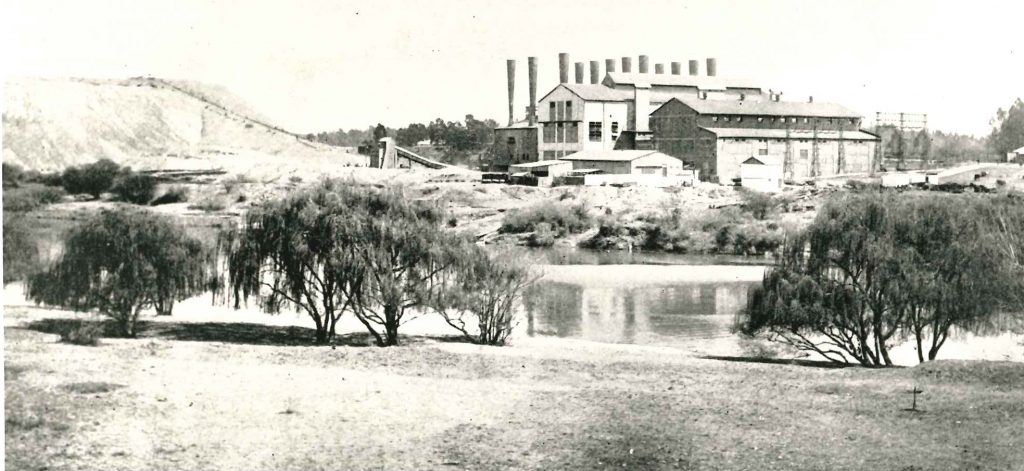
In 1906, the reef gold mines were producing roughly one third of the world’s total gold output, and they had the potential to produce much more if electricity were to become more readily available. On 17 October that year, the Victoria Falls Power Company Limited(VFP) was founded. The VFP was an undertaking in which a German firm hoped to bring power to South Africa from Rhodesia (now Zimbabwe), by tapping the great power of the Victoria Falls. The Victoria Falls Power Company Limited would change its name to the Victoria Falls and Transvaal Power Company Limited in 1909. The VFP bought out the Rand Central Electric Works and the General Electric Power Company. In 1910, the Transvaal Power Act granted the VFP a license to provide power to the Witwatersrand mines. Sammy Marks had earlier written a letter to the Chamber of Mines trying to forestall agreements with the VFP so that he could pursue his idea of a Vereeniging Power Station, but was unsuccessful. He had written the letter in 1906 when the Transvaal colonial government was hoping that mechanization and electrification would ease labour shortage problems. Under such circumstances, it was believed that one very large power station, at Victoria Falls, would be preferable. On the other hand, the feasibility of such a large project so far from its consumers was difficult to argue.
Promoters of the Victoria Falls scheme approached Cecil John Rhodes’ Consolidated Gold Fields Group with a pending supply offer, but it was turned down. The Consolidated Gold Fields Group was concerned that the long distance over which the power lines would have to stretch would endanger supply during possible future wars, making the lines too easy for enemies to cut. Furthermore, political change could complicate the deal in the future, and conditions of the power lines would be difficult to monitor. Those promoting the Victoria Falls scheme then approached Corner House Group and consulted with A. W. K. Pierce. Pierce, however, had been the man to examine the idea for Rhodes, and he turned the proposal down for Corner House Group as well. The VFP’s grand scheme was faltering. The mines were unwilling to take the risks and Sammy Marks was still eager to build a Vereeniging Power Station. The time was ripe for a deal between Sammy Marks and the syndicate that had been promoting the VFP. The syndicate would finally float the VFP. Vereeniging Estates Limited (including Sammy Marks) would withdraw their scheme and receive 20,000 fully paid-up shares in the VFP, and a seat on its board. The VFP would also agree to build a power station at Vereeniging and buy all the coal and water for the station from Vereeniging Estates Limited. The deal was a good one for Marks, and he accepted.
SITING THE POWER STATION
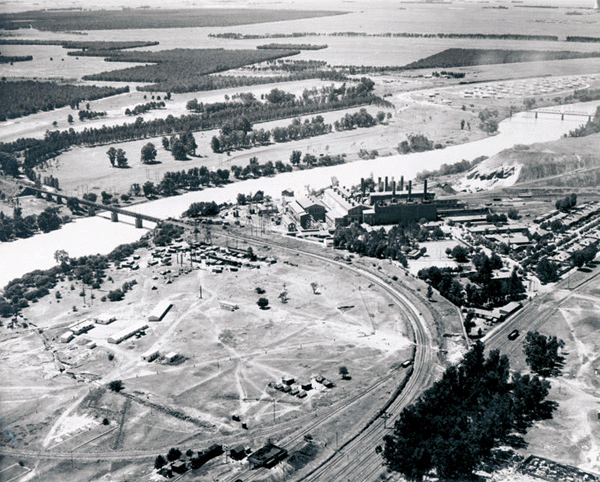
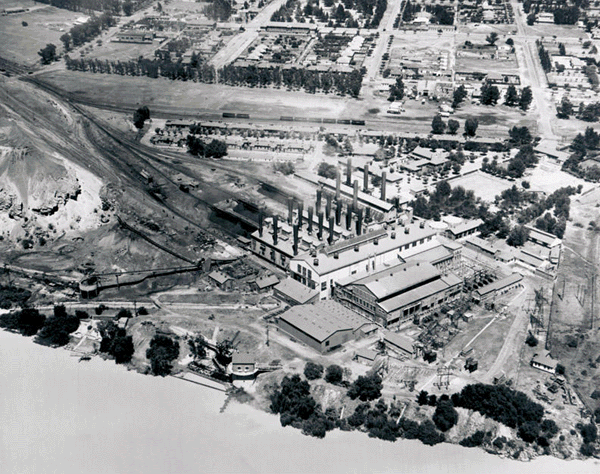
Site of the power station
A perfect site was chosen for the station. It would be built on the Vaal River by a low dam (the Leslie Weir, commonly referred to as the Sammy Marks Weir) sixty kilometres south of Johannesburg. The dam had been built by Vereeniging Estates after the South African War and would provide all the water necessary for cooling purposes. The site was also near to the Rand and had unlimited coal reserves. The construction of the station was helped by the availability of cheap stone, timber and bricks in the area. Furthermore, Vereeniging Estates held the water rights and licenses for a transmission line between their Vaal properties and Johannesburg. All that was needed was a consumer, and South Africa’s largest mining house (Rand Mines Group) had decided to electrify all its equipment without building its own power stations. .
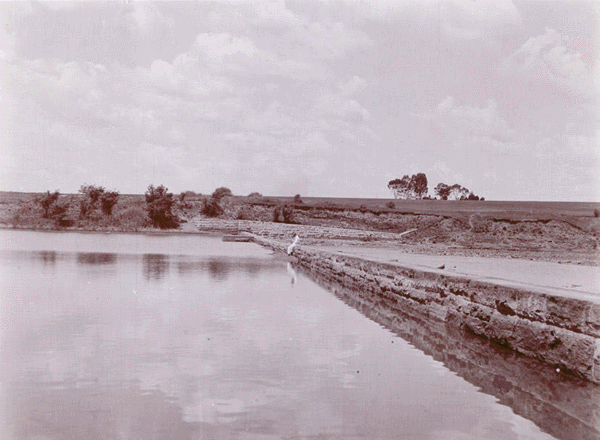
Conditions were put forward by Rand Mines for the signing of a deal. The VFP was to establish a separate power supply company registered in the Transvaal, and not in Rhodesia (now Zimbabwe). This new company would supply electricity and compressed air in bulk exclusively to the Rand Mines Group, and the Corner House Group. The new system would be unconnected with the VFP system. On 1 June 1908, Rand Mines Power Company was established as the owner of the proposed Vereeniging Power Station. As far as the VFP was concerned, its plant at Simmerpan, and the enlarged plant at Brakpan provided all the power necessary. The Vereeniging Power Plant could be connected with a plant in Rosherville to provide for the Rand Mines Power Company. Of South Africa’s first power plants at Brakpan, Simmerpan, Rosherville, and Vereeniging, it was the Vereeniging Power Plant that would hold the most potential for enlargement in the coming years. Vereeniging Power Station would have to compete with the original and large-scale plans for a plant that would have tapped the enormous power of the Victoria Falls
The construction of Vereeniging Power Station was finally completed on 14 September 1912. As the station was described in the Star Newspaper.
“The turbine house… is situated in a lofty corrugated iron building, one gable of which looks across the neighbouring waters of the Vaal, while the other towers above the neat little estate where many of the operatives and their families live. The lower portion of this building is occupied by boilers and the turbine house above is a very spacious apartment.
In the first year of its operations, workers went on strike in Johannesburg and leaders of the strike sent a contingent to Vereeniging by bicycle to incite the station’s employees. When the workers refused to be taken in, the agitators were forced to spend twelve hours cycling back over rough terrain to inform the strike leaders of their failure.
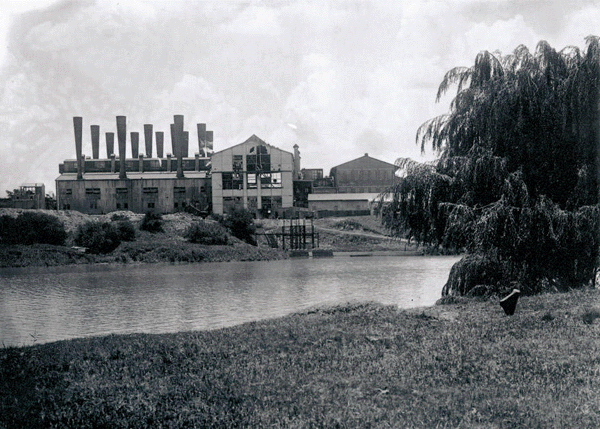
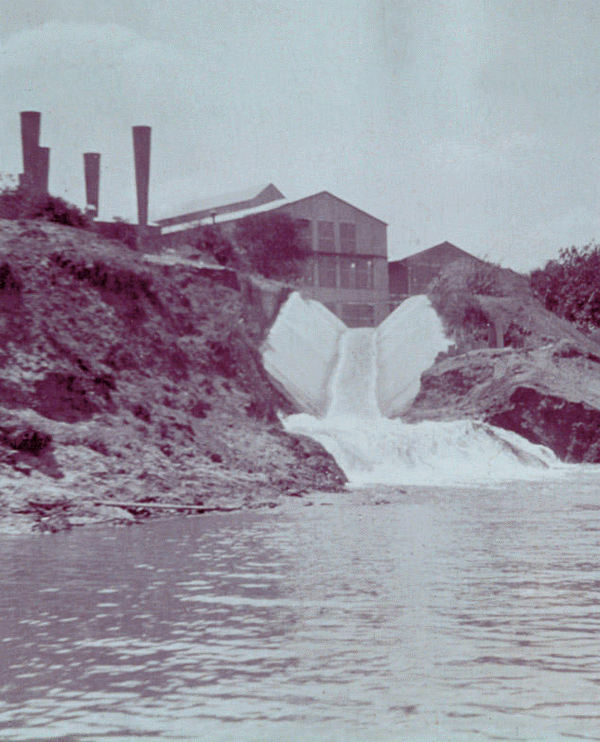
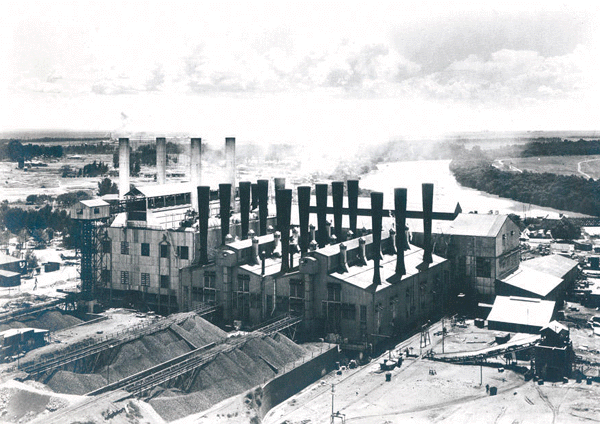
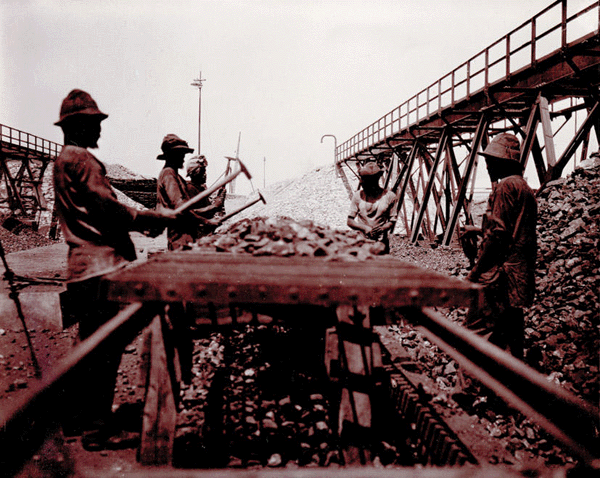
EXPANDING A GIANT
Vereeniging Power Station was a pioneer in many respects. Power was transmitted to the Rand by way of South Africa’s first 80 kV transmission line to Robinson Substation, where it was interconnected to Rosherville Power Station. The station had an initial generating capacity of 43 MW that, by 1943, was enlarged to 157.5 MW making it the largest of the early power plants. This total came from three units at 20 MW and three units at 32.5 MW. It was also the first power station in the world to be sited on a coalfield. This meant that coal transportation costs were minimized and even today, stations around the world try and follow in the footsteps of the Vereeniging Power Station. It was also the first station to use river water for cooling purposes. The water was pumped from the Leslie Weir under the water rights of Vereeniging Estates. Issues that were later raised about the water supply were to be “pivotal to the development of future policy on water use for industries in South Africa”.
In 1908, the Transvaal Colonial Government had passed the Irrigation Act. Water was to be allocated primarily for humans and animals, secondarily for agriculture, and only thirdly for industrial use. The Act was carried forward by the Union Irrigation Act of 1912, and in 1914 a bill was drafted through which the Rand Water Board was authorized to build a dam on the Vaal, downstream from Vereeniging Power Plant. These laws overruled Vereeniging Estate’s rights regarding the Vaal water, and therefore overruled Vereeniging Power Station’s rights to the water. There were several consequences. The Rand Mines Power Company would have only tertiary rights to the water therefore requiring a permit from the Water Court in order to extract water. The Rand Water Board would also have complete control over all surplus water meaning that Vereeniging Power Station could never be expanded without permission from the Rand Water Board.
Finally, the Rand Mines Power Company would have to contribute toward the running of the Rand Water Board. The Rand Mines Power Company took the matter to the Water Court arguing that its rights by the agreement with Vereeniging Estates should be upheld, but early in 1917 the Water Court concluded that no special permit could be granted to the Rand Mines Power Company. In the following year the company petitioned parliament for a Private Act that would secure its water rights; but the Rand Water Board objected. The bill had to be referred to a Parliamentary Select Committee for investigation. The Director of Irrigation and Technical Advisor to the Parliamentary Select Committee on Water Affairs, Dr. F. E. Kanthack, testified that the application made by Rand Mines Power Company would be acceptable if strict conditions were met regarding water extraction rates, and both thermal and chemical pollution. In May 1919, Rand Mines Power Supply Company Water Supply (Private) Act (Act 14 of 1919) came into operation. Thereafter, the VFP and later ESCOM have always been conscious of their obligation to safely control the pollution of water sources.
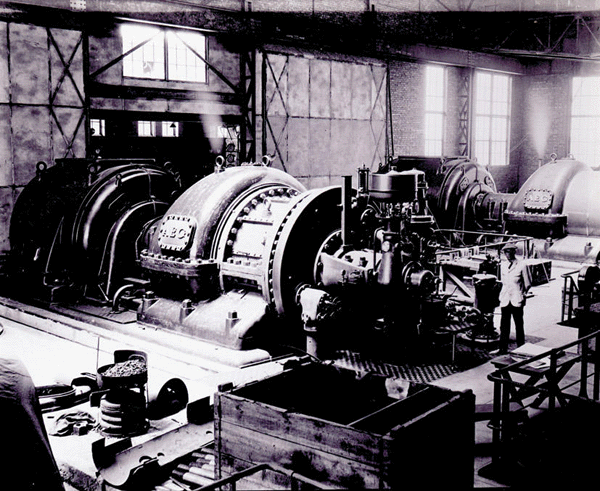
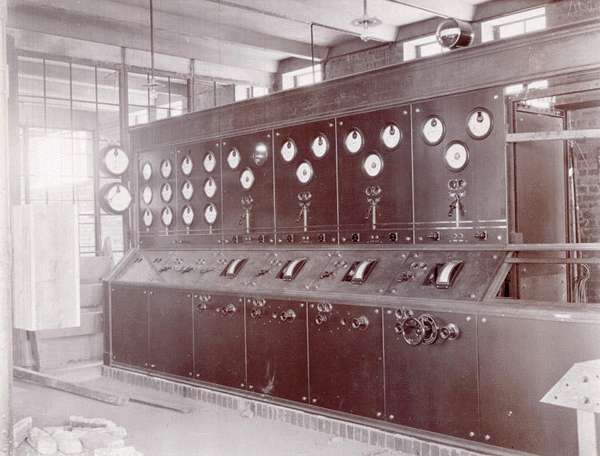
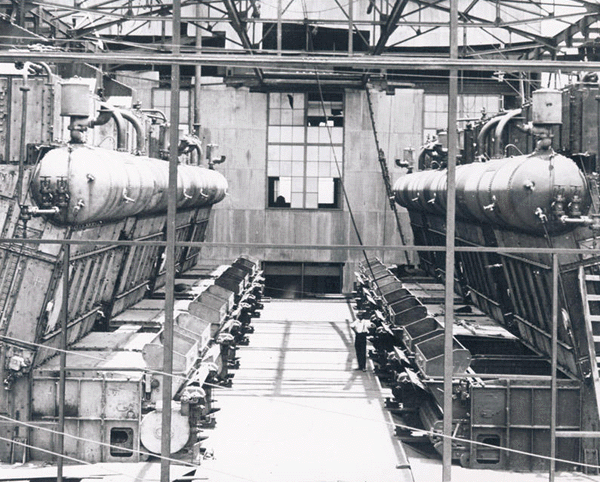
Vereeniging Power Station had originally been equipped with two 9.6 MW sets. Two 12 MW sets were added in 1913, and by 1915 the station had an installed generating capacity of 43.2 MW (58,000 hp). The plant had four turbine generators and twenty Babcock and Wilcox marine type boilers. There was no expansion of the plant for some time thereafter since World War One had rendered additional equipment unobtainable and direct concerns regarding gold production became a number one priority. In 1921, 107 houses were connected to the VFP power supply main, and Vereeniging Power Station had earned a respectable reputation.
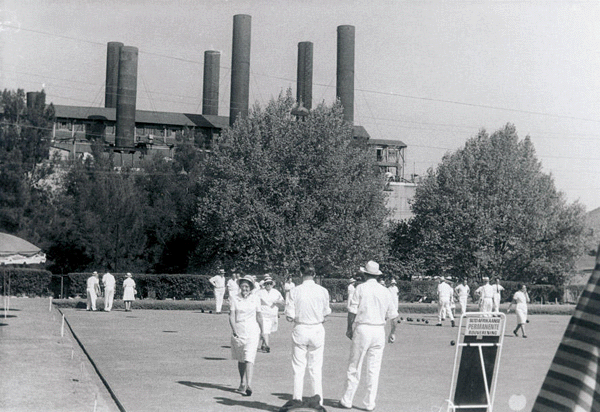
HOUSING AND RECREATION
The power station was practically a suburb of Vereeniging, having its own houses, recreation hall and sporting facilities. It was a “self contained community almost in the heart of Vereeniging”. Over a hundred employees and their families lived on the station grounds, which “constituted the nucleus of social life”. Many public functions and dances were held in the recreation hall such as the Hogmanay Ball (Hogmanay is the last day of the year). At the Hogmanay Ball participants would dance polkas, waltzes, valetas, and foxtrots until dawn, and the station would pour its heated water into pools above the weir in which children often played. For thirteen years after 1912, Vereeniging Power Station had been the largest station in Southern Africa. In 1925, an event at the station was to put it in the headlines as it had never been before.
THE EXPLOSION OF 1925
During a stormy night early in December 1925, the plant’s 10 MW generators were running as usual. Without warning, no. 2 generator suffered a mechanical failure that effectively removed the resistance against which the rotating part of the generator spun. Steam from the boilers continued to spin the machinery, but without proper resistance it spun faster and faster until the centrifugal force was great enough to rip the generator apart. The rotating part tore through the frame of the machine, which scattered in pieces in all directions. Large pieces of metal debris were launched throughout the station, penetrating the walls and roof with some pieces landing kilometers away. The other three generators were damaged and one quarter of the station building was destroyed, with not a single window in the building left intact. The core of the revolving machinery, weighing roughly two tons, ripped through the roof leaving a hole several yards wide.
The core flew through the sky crossing the Vaal River and landing in the Free State, where it was later found embedded in the earth. Other pieces of metal flew over nearby houses. One piece broke through the branch of a tree and another settled inside someone’s house. As the power station shuddered, one worker was splashed in the face with hot oil, and a flying brick hit a pump attendant. The turbine driver, Mr. W. J. Ball, had been standing only a few yards from the generator, but miraculously escaped unharmed. He lived to become a mayor of Vereeniging. As the Star Newspaper reported, “the men who were in the station at the time of the smash, account it nothing short of marvelous that they escaped with their lives, to say nothing of serious injury”. After the shift engineer had frantically checked for injuries among the workers and only minor injuries were found, the panic died down. It is said that he then phoned Central Control to say, “Sir, I wish to report that the generator is now in the Free State”.
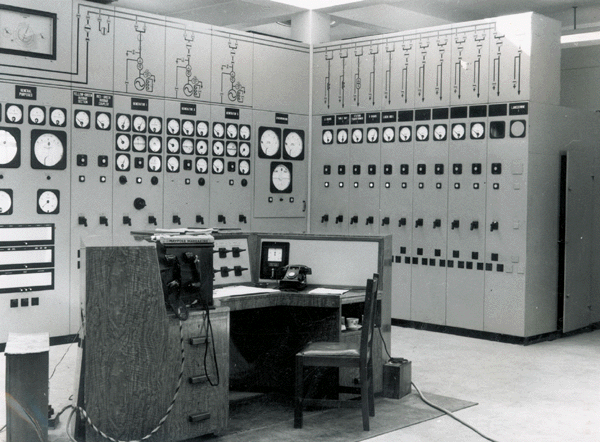
Over the next few days the newspapers churned out all of the statistics. Forty five tons of machinery had been thrown through the roof, roughly £50,000 worth of damage had resulted , and pieces of machinery had landed over two kilometers away. Chief Engineer of the VFP, Bernard Price, said in a statement to the Star Newspaper, “Preliminary investigations go to show that the cause of the accident was the sudden fracture of the shaft of the rotating part of the electric generator of one of the machines. This caused the electrical generator to burst, but the steam turbine was virtually unaffected”. It was reported that repairs were quickly being made under the headline, “Smart Work By VFP”, and the mines which relied on Vereeniging Power Station were assured that three of the generators would soon be restarted. There were other plants connected to Vereeniging Power Station but the power lines that would have to be used to receive help carried the wrong voltage. Until that problem could be averted, residential areas had to accept power shortages in peak periods. The two ton piece of machinery that had landed in the Free State drew much attention in the days after the explosion. It contained much copper, and parts were taken to make souvenirs such as trinkets and bangles. Arthur Briggs (electrician for the steelworks Usko Vaal made a soldering iron which he was reported to have kept as long as a half century after the incident. The generator that had failed was eventually replaced with a 20 MW set providing even more power than before. Vereeniging Power Station was to enjoy even greater expansion over the coming years.
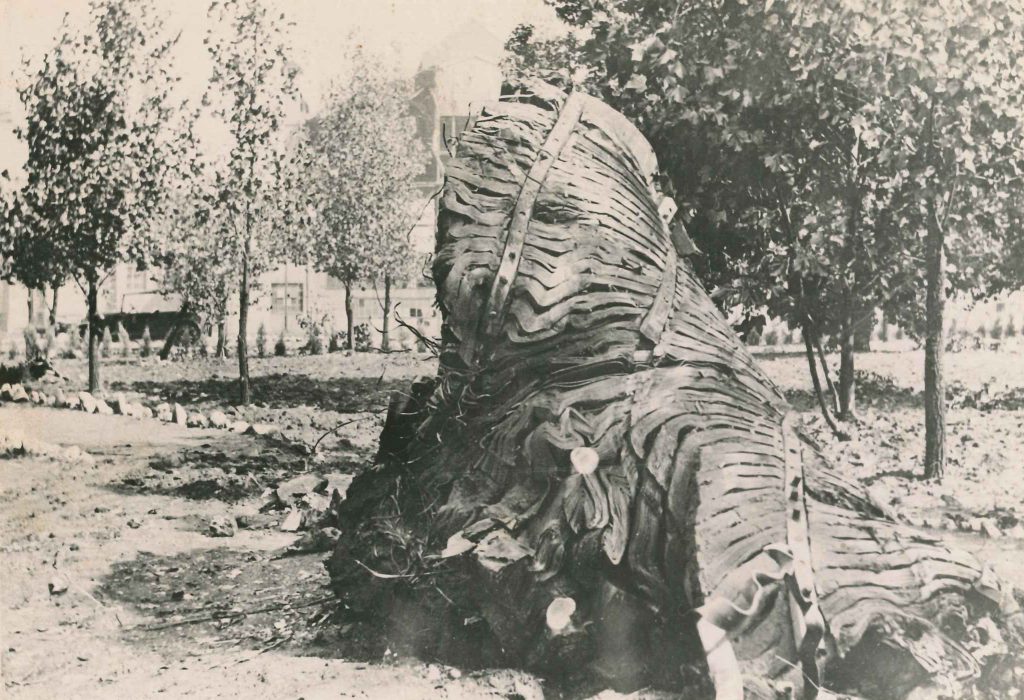
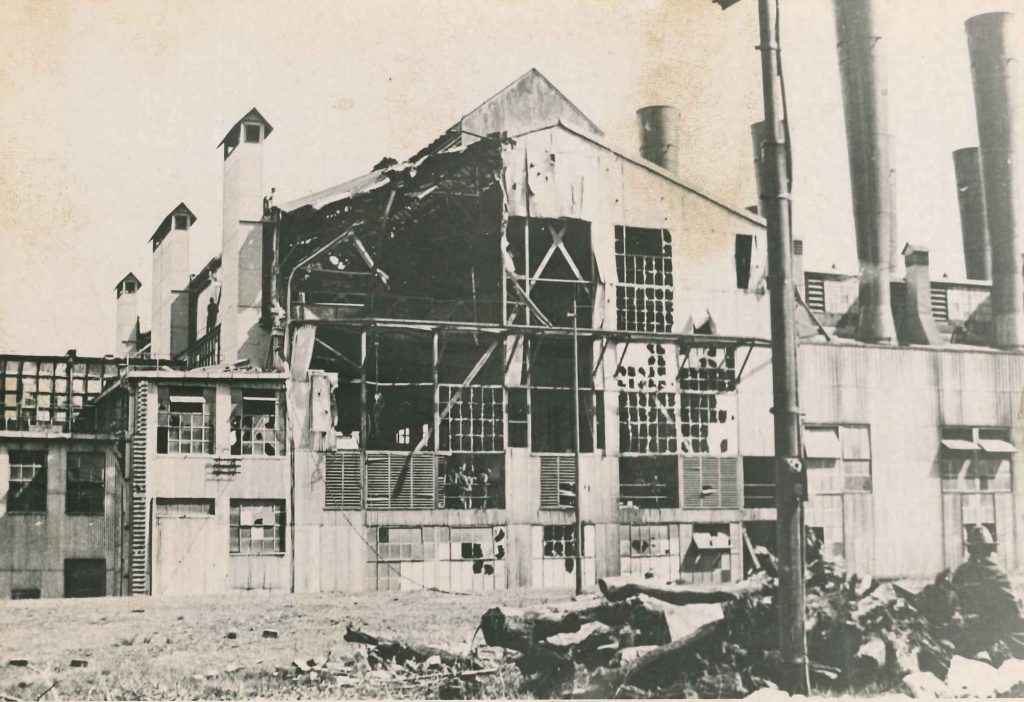
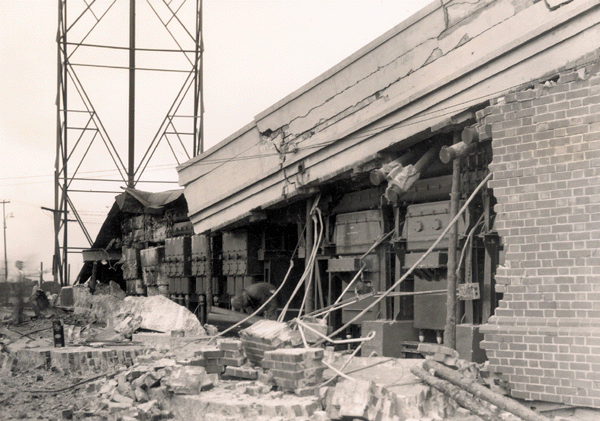
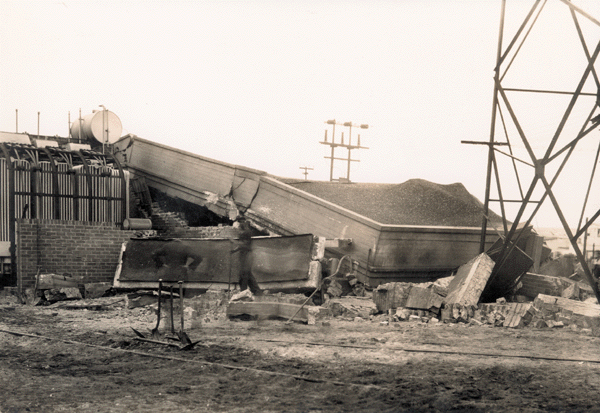
After the explosion
THE FINAL YEARS
Between 1923 and 1933, Vereeniging Power Station was extended four times giving it a generating capacity of 140 MW and making it one of the largest stations in the British Empire at that time. The mines, however, were also expanding quickly, and by 1934 the VFP was nearing the limits of its capacity to supply power to the gold mines of the Rand. In that year, Amalgamated Collieries acquired the rights to mine coal on the property of McKay Estates, where the small Springfield Colliery had gone into liquidation. Amalgamated Collieries was a subsidiary of Vereeniging Estates. The purpose of the move was to induce Sir Bernard Price, chairman of the VFP, to build a second power station in Vereeniging. Vereeniging Estates allowed its new land to become the site for Klip Power Station, which would receive its coal from Springfield Colliery. Mines were requiring more electricity, and more residents in Johannesburg and Vereeniging were applying for electric current. Despite the new Klip Power Station, another extension had to be built onto Vereeniging Power Station in the late 1930’s. In 1936, the station was connected to the Witwatersrand system by means of 80,000 volt lines, those being lines of the highest voltage in the southern hemisphere at that time.
By 1938, ESCOM was on the scene, having been founded in 1923, and with the VFP decided to build Vereeniging’s third power station (Vaal Power Station) next to Vereeniging Power Station, on the opposite bank of the Vaal River.
In 1948, ESCOM bought out the VFP and acquired Brakpan, Simmerpan, Rosherville, and Vereeniging Power Stations. The decade 1950 to 1959 was a decade of rapid expansion for Eskom. The organisation added boilers and generators to six stations including Vereeniging Power Station. In 1959, Eskom erected the region’s fifth power station. Highveld Power Station was built on the coal-fields surrounding Vereeniging and it completed the greatest concentration of power generating stations in South Africa (at that time). The five power stations were producing a total of 1 780 MW, but Vereeniging Power Station had become known as the Old Vereeniging Station and despite all its expansion was producing less then one eleventh of the five station’s total output (160 MW). The Old Vereeniging Station was one of the biggest stations when built, and during its life span, it expanded to nearly four times its original size. The fact that it would be closed down as the smallest of five stations in the region is a testament to the rapid expansion of industry in South Africa.
Vereeniging had become a major centre for steel and engineering industries. With the help of its power plants it had earned the name, “Power House” of the Transvaal. As the Rand Daily Mail reported at the time of its closing, “the importance of Vereeniging Power Station’s contribution to the country’s economy and the development of the gold mines and national industries is inestimable”. In 1974, the Vereeniging and Vanderbijlpark News reported that it had “pioneered the way for Eskom’s new grid which provides power to the whole of the Republic”. It was only in 1974 that ESCOM began demolishing the Old Vereeniging Power Station. All that remains today is a restricted area where old and unused coal mineshafts make walking too dangerous. A few of the station’s old subsidiary buildings remain standing. Some are used by some small local businesses. In the area around those businesses, power lines, old slabs of cement, and remnants of railway track still show where Vereeniging Power Station was a symbol “of the awakening industrial life beyond it”.
BIBLIOGRAPHY
Conradie, S. R. and Messerschmidt, L. J. M.: A Symphony of Power: The ESCOM Story. Chris van Rensburg Publications (PTY) Limited, Johannesburg, 2000.
Leigh, R. L.: Vereeniging: South Africa. Courier-Gazette Publishers (PTY) Limited, Vereeniging, 1968.
Rand Daily Mail
Star Newspaper
Vereeniging and Vanderbijlpark News
Information was also received from the Eskom information Centre and the Vaal Teknorama Museum.
